Cataract Causes and Treatment
A cataract is a clouding of the lens in the eye that affects vision. Most cataracts are related to aging.
Cataracts are very common in older people. By age 80, more than half of all Americans either have a cataract or have had cataract surgery. A cataract is a clouding of the lens in the eye that affects vision. Most cataracts are related to aging, and can occur in one or both eyes. By age 80, more than half of all Americans either have a cataract or have had cataract surgery. Symptoms of cataracts can include blurry vision, difficulty seeing colors, difficulty seeing in low light, double vision, halos around light, and frequent changes in eyeglass or contact lens prescriptions.
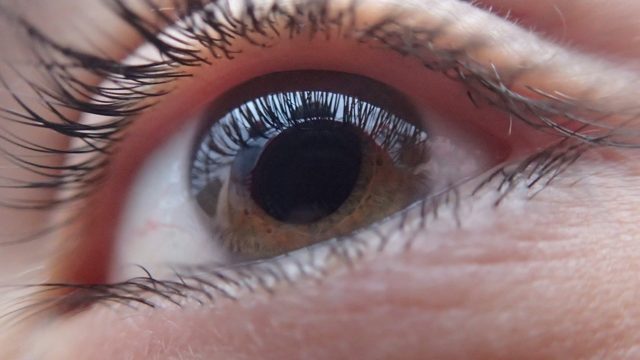
Cataracts can become so severe that they interfere with your everyday activities, including driving, reading, and watching television. If left untreated, cataracts can cause permanent vision loss and blindness.
Fortunately, cataract surgery is a safe and effective way to restore your vision. During a cataract surgery, the clouded lens is replaced with an artificial intraocular lens. After the surgery, most people experience improved vision, greater clarity, and brighter colors. And because cataract surgery is so successful, it is one of the most commonly performed surgeries in the United States.
What Causes a Cataract?
Most cataracts are related to aging. Other risk factors include excessive exposure to sunlight, smoking, diabetes, high blood pressure, obesity, and the use of certain medications for a long period of time.
Cataract surgery is the only way to treat cataracts. The surgery involves the removal of the eye's natural lens and the replacement of it with an artificial intraocular lens. This procedure is relatively safe and effective, with most people noticing significant improvement in their vision after the surgery. The success rate of cataract surgery is very high and most people find that they are able to return to their regular activities within a few days. In some cases, a second surgery may be necessary to fully restore vision.

Additionally, the use of special eyeglasses or contact lenses may be necessary after surgery in order to improve vision. This is especially true for those with an unusually high prescription or for those with astigmatism.
Furthermore, regular follow-up visits to the eye doctor are necessary to ensure that the eye is healing properly and to make any necessary adjustments to the intraocular lens. Lastly, it is important to keep in mind that cataracts can reoccur, even after successful surgery. Therefore, it is important to attend regular eye exams and to take the necessary steps to prevent the development of cataracts in the future.
Signs and Symptoms of Cataracts
Common signs and symptoms of cataracts include: blurred vision, double vision, glare, halos around lights, faded colors, poor night vision and difficulty reading. Additional symptoms may include frequent changes in prescription eyeglasses, difficulty driving, difficulty distinguishing between faces, or seeing rainbow-like circles around bright lights.
Cataracts can also cause a person to experience a general hazy or cloudy vision, and the condition may cause colors to appear less vibrant. People with cataracts may also experience a sensitivity to light and difficulty seeing in dim or dark lighting.
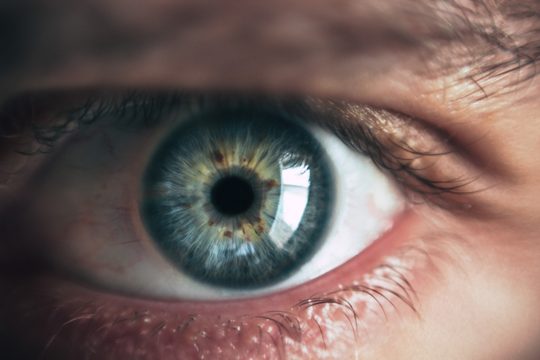
In more severe cases, people may experience a loss of peripheral vision or a "tunnel" vision. In some cases, people with cataracts may also experience eye pain or discomfort, and headaches.
Diagnosis of Cataracts
A comprehensive eye exam is needed to diagnose a cataract. Your doctor will check your vision and look for signs of a cataract.
Your doctor may also use an imaging test to look at the lens of your eye. This imaging test is typically done with an instrument called a slit lamp. This instrument shines a light into your eye and allows your doctor to see the lens of your eye more clearly. Your doctor can then look for any signs of a cataract, such as cloudy areas or changes in the color of the lens.
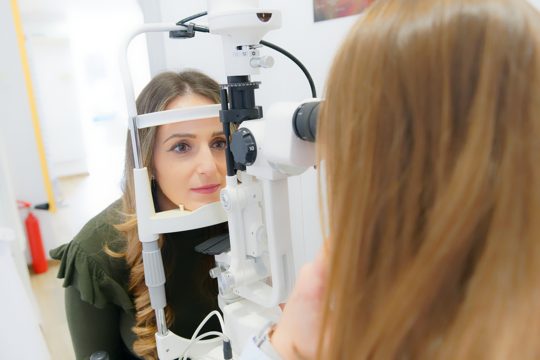
The doctor may also use a magnifying lens to get a better look at your eye. If a cataract is found, your doctor may recommend you see a specialist for further testing.
This specialist might use an ultrasound device to get a better look at the cataract and determine the best treatment options. Even if a cataract is not found, your doctor may suggest some lifestyle changes to improve your vision and reduce your risk of developing a cataract in the future. Eating a healthy diet, getting regular exercise, and avoiding smoking and excessive alcohol consumption can all help keep your eyes healthy and prevent cataracts.
Treatment of Cataracts
Treatment for cataracts includes eyeglasses, contact lenses, magnifying lenses, and surgery. Surgery is the only way to remove a cataract.
During cataract surgery, the cloudy lens is removed and replaced with an artificial lens. Surgery is a safe and effective way to treat cataracts and is usually recommended when the cataract is mature and causing significant vision issues. During the procedure, the eye is numbed and the surgeon makes a tiny incision in the eye to access the cloudy lens. The cloudy lens is then carefully removed and replaced with an artificial lens. Depending on the type of lens, the artificial lens may even provide better vision than what was possible before the cataract developed.
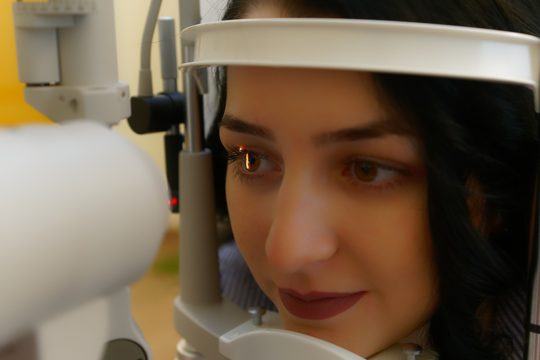
The entire procedure usually takes less than an hour and has a high success rate. After surgery, most patients experience improved vision within a few days.
Vision can continue to improve for up to a month or two following the surgery. While cataract surgery has proven to be an effective treatment for cataracts, there are still risks associated with the procedure. Infection, bleeding, and retinal detachment are among the potential complications. It is important for patients to discuss these risks with their surgeon before deciding to have the surgery.
Recovering from Cataract Surgery
Most people recover quickly from cataract surgery. You will need to wear an eye shield at night for the first few days.
You may also need to use eye drops and glasses for a few weeks while your eye heals. After your eye has healed, you should have improved vision. You may notice some blurred vision in the first few days after the cataract surgery, but this is nothing to worry about - it usually clears up within a couple of days. You might also experience some discomfort in the eye - this is normal and usually gets better in a few days with the use of the eye drops you have been prescribed.

Your vision may not be perfect straight away, but it should improve over the next few weeks as your eye continues to heal. You may also need to wear dark glasses when you are outside to protect your eye from bright lights and the sun.
During this time, it is important to keep your eye clean and free from any dirt or debris. Your doctor will also recommend that you use an eye shield while you sleep to protect your eye from any further damage. With the right care and attention, your eyes should be back to normal soon and you should be enjoying improved vision.
Preventing Cataracts
You can reduce your risk of developing cataracts by wearing sunglasses, eating a healthy diet, avoiding smoking, controlling diabetes and high blood pressure, and managing your weight. Getting regular eye exams can also help detect cataracts early.
In addition to the above, you can help reduce your risk of cataracts by avoiding too much exposure to sunlight and ultraviolet rays. You should also consider using a hat with a brim to protect your eyes and wear protective eyewear when doing activities that could put your eyes at risk, such as welding or using certain types of power tools. Consuming certain vitamins and minerals like vitamin C, E, and zinc may also help reduce your risk of developing cataracts.

Finally, it's a good idea to limit your intake of alcohol as it can be dehydrating which can cause dry eyes, another risk factor for cataracts. Taking a few simple steps can help keep your eyes healthy and reduce your risk of developing cataracts.
Wearing sunglasses, eating a healthy diet, avoiding smoking, controlling diabetes and high blood pressure, managing your weight, getting regular eye exams, avoiding too much exposure to sunlight and ultraviolet rays, wearing protective eyewear when necessary, consuming certain vitamins and minerals, and limiting your intake of alcohol are all important steps to take in order to reduce your risk of developing cataracts.
Conclusion
Cataracts are very common, but they can be treated. Surgery is the only way to remove a cataract.
Most people recover quickly from cataract surgery and can get back to their normal activities. You can reduce your risk of developing cataracts by following a healthy lifestyle and getting regular eye exams. Additionally, you can protect your eyes from the sun’s ultraviolet rays by wearing sunglasses that block both UVA and UVB radiation. Eating a balanced diet that includes plenty of fruits and vegetables can also help reduce your risk of developing cataracts.
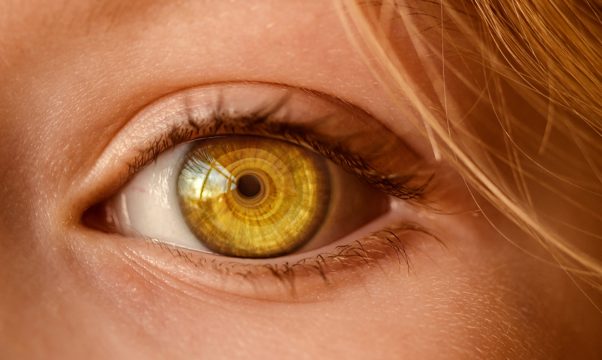
Additionally, if you have diabetes, it is important to manage your blood sugar levels as high blood sugar can increase the risk of developing cataracts. It is also important to quit smoking as smoking increases the risk of developing cataracts.
Finally, if you already have cataracts, you should talk to your doctor about the best treatment plan for you. With the right treatment plan, you can reduce your risk of developing more serious vision problems due to cataracts and can improve your vision.
About us
Welcome to MedicareWisdoms! We're so glad you're here. Our goal is to provide you with the information you need to make informed decisions about your health and Medicare coverage. Whether you're just starting to explore your options or you're looking for expert advice, we're here to help. Our team of knowledgeable professionals is dedicated to answering your questions and providing you with the resources you need to stay healthy and happy. So, take a look around, explore our site, and discover the wisdom of Medicare. Thank you for choosing MedicareWisdoms!

